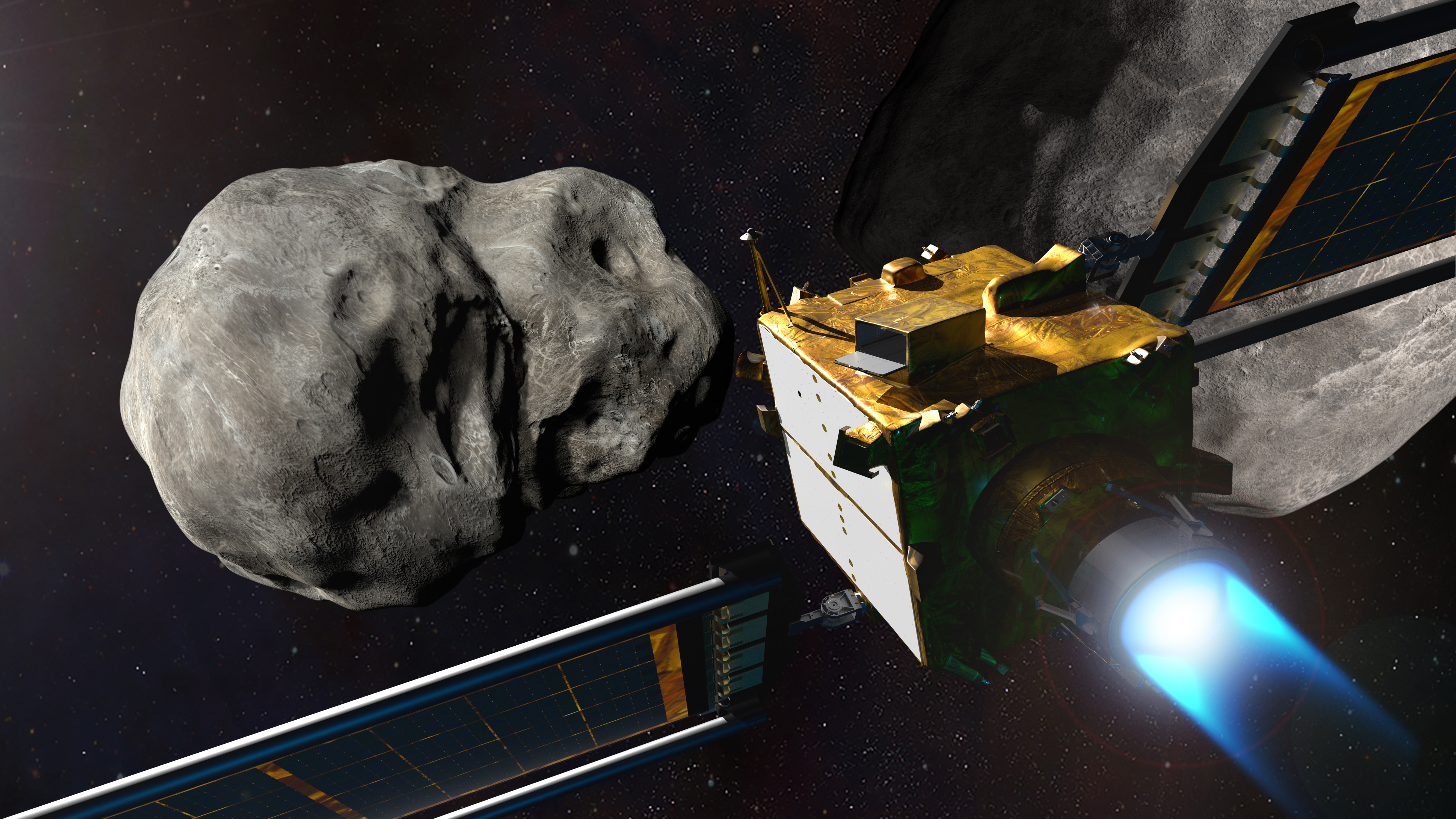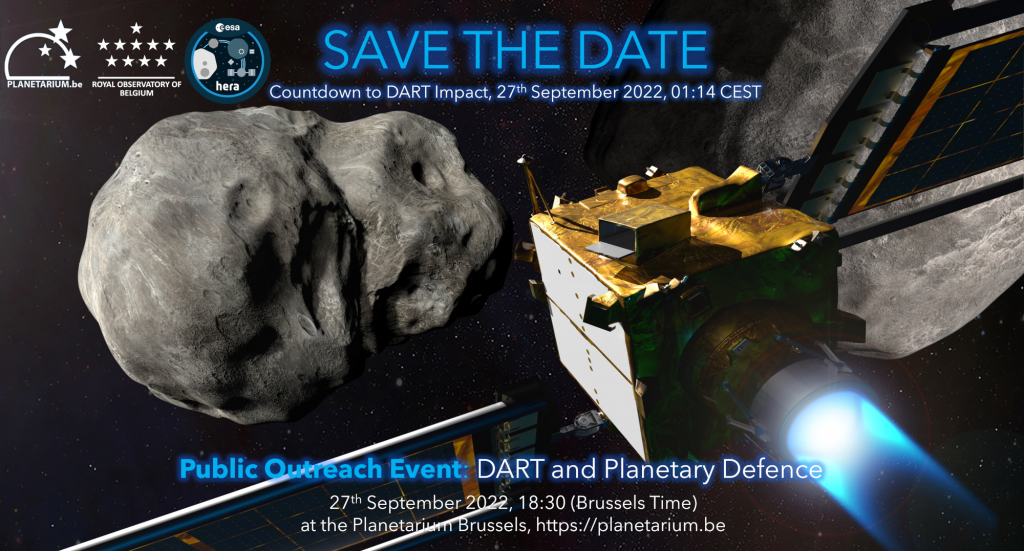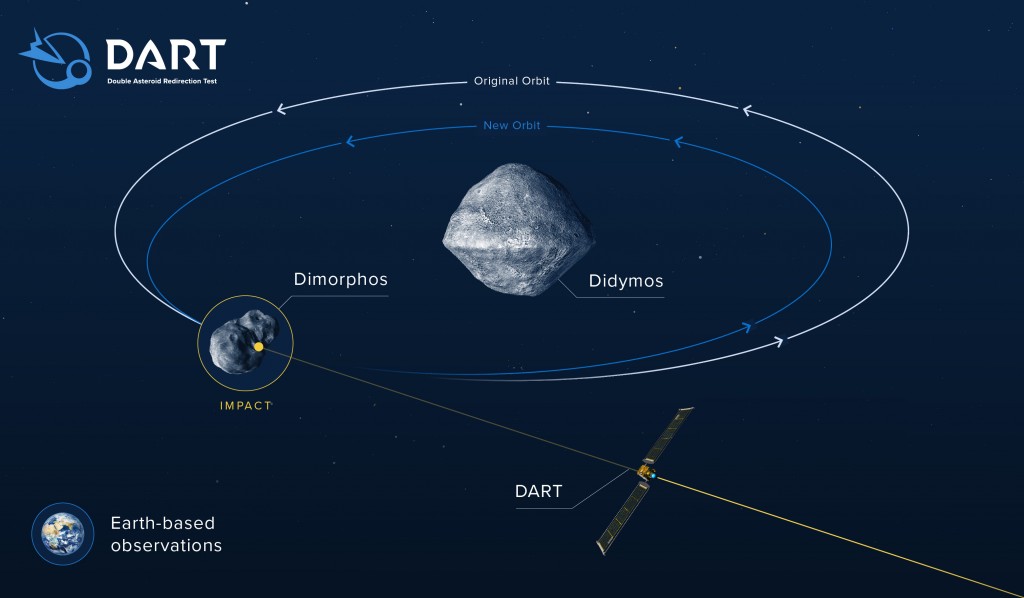DART impact on an asteroid, a milestone for the Royal Observatory of Belgium
Brussels, 20 September 2022 – During the night of September 26–27, at approximately 1:15 a.m. (Belgian time), NASA’s DART probe will crash into the asteroid Dimorphos, located more than 10 million kilometres from Earth. The purpose of this impact is to test an asteroid deflection strategy. For the Royal Observatory of Belgium, which is involved in planetary defence, this mission represents an important first step.
On 24 November 2021, the DART (Double Asteroid Redirection Test) probe took off from the Vandenberg Space Force base in California (USA). Its journey of almost a year will end in a few days. This will allow us to study asteroid deflection by probe impact. The target of the mission is the Dimorphos asteroid. It is the smallest of a binary system of asteroids called Didymos and has a diameter of about 160 m (780 m for the main body, also called Didymos).
It is a full-scale planetary defence experiment with an impact speed of over 22,000 km/h (6.15 km/s). The experiment will also provide a better understanding of the Didymos binary system. By studying the system before and after the impact and comparing observations and numerical simulations, we will learn more about the ‘big rocks’ that move through space and could pose a threat to the Earth.
The Royal Observatory of Belgium is involved in the study of the Didymos system, via the DART mission and the ESA Hera mission. If you would like to learn more, we invite you to meet the scientists involved in these missions at the Brussels Planetarium on the evening after the DART impact.
Address: Planetarium, Av. de Bouchout/Boechoutlaan 10, 1020 Brussels.
Date: 27 September 2022, from 6.30 p.m. to 7.30 p.m.
Admission is free and no reservation is required.
Presentations and activities will be given in English, with some explanations in French and Dutch.
The Royal Observatory of Belgium involved in planetary defence
The Royal Observatory of Belgium is involved in the study of the Didymos system at different levels. Firstly, it is part of the DART observation team that is collecting and will collect as much information as possible on the system before, during and after the impact by means of Earth-based telescopes. The Observatory will participate in the analysis of these data to deduce the changes in orbit and rotation of Dimorphos. By comparing the observations with numerical simulations used to predict the evolution of the two asteroids after the DART impact, scientists of the Observatory will be able to study the dynamics of the system and the internal structure of the Dimorphos asteroid.
In addition, the Observatory is involved in ESA’s Hera mission, which in 2027 will visit the Didymos system to further study the impact outcome, the internal structure of the asteroids and their evolution. The Hera spacecraft will carry two CubeSats: Juventas and Milani. The first is being developed under the scientific responsibility of the Observatory. It will be equipped with several instruments, including the GRASS gravimeter, which was designed at the Observatory in partnership with the Spanish company EMXYS.
The Observatory’s scientists are collaborating with their colleagues from DART and Hera, partners in the European Commission projects PIONEERS (Planetary Instruments based on Optical technologies for an iNnovative European Exploration using Rotational Seismology) and NEO-MAPP (Near-Earth Object Modelling and Payloads for Protection), to which the Observatory is also contributing.
The research related to the Hera mission and the GRASS instrument at the Royal Observatory of Belgium is funded by the Belgian Federal Science Policy (Belspo) with the help of the ESA PRODEX programme. The PIONEERS and NEO-MAPP programmes have received funding from the European Union’s Horizon 2020 research and innovation programme.
More information
Hera mission website: https://www.heramission.space/
DART website to follow the countdown: https://dart.jhuapl.edu/
DART press kit: https://dart.jhuapl.edu/Press-Kit/index.php
PIONEERS project website: https://h2020-pioneers.eu/
NEO-MAPP project website: https://neomapp.eu/
You can also take part in the observation campaign proposed by Unistellar: https://unistellaroptics.com/observe-dart-with-a-telescope-fr/



